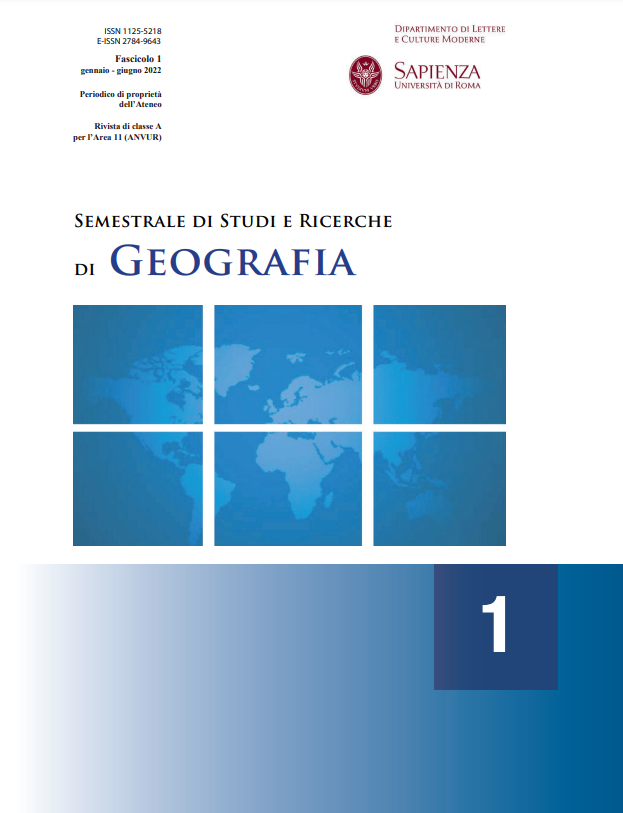The diffusion of COVID-19 in Italy: An exploratory economic geographical analysis in the first pandemic wave
DOI:
https://doi.org/10.13133/2784-9643/17531Abstract
The coronavirus disease 2019 (COVID-19) affected Italy before and more severely than other European countries. The exploratory analysis contained in this paper, based on various statistical techniques (i.e. principal component analysis, cluster analysis and Pearson’s correlation), aims at seeking the existence of an association between the number of infected people and some critical socioeconomic and environmental indicators in the context of the Italian provinces (NUTS 3 level) during the first pandemic wave. In economic geography, it is widely acknowledged that a critical mass of firms and people in regional or sub-regional areas is beneficial for the local or regional economy, although this may have a negative impact in the case of a pandemic event such as the COVID-19. The empirical analysis enabled us to distinguish three main components, to which correspond three distinct typologies of Italian provinces (i.e. “Dense and Polluted”, “Dynamic, Connected and Rich” and “Open and Rich” provinces). As expected, the first two components show a moderately strong and statistically significant correlation with the registered cases in the Italian provinces, thus revealing a possible association between the spread of the contagion and the densest, most dynamic and competitive Italian regions.
##submission.downloads##
Pubblicato
Fascicolo
Sezione
Licenza
Copyright (c) 2022 Semestrale di studi e ricerche di geografia

TQuesto lavoro è fornito con la licenza Creative Commons Attribuzione 4.0 Internazionale.
Gli autori che pubblicano su questa rivista accettano le seguenti condizioni:- Gli autori mantengono i diritti sulla loro opera e cedono alla rivista il diritto di prima pubblicazione dell'opera, contemporaneamente licenziata sotto una Licenza Creative Commons - Attribuzione che permette ad altri di condividere l'opera indicando la paternità intellettuale e la prima pubblicazione su questa rivista.
- Gli autori possono aderire ad altri accordi di licenza non esclusiva per la distribuzione della versione dell'opera pubblicata (es. depositarla in un archivio istituzionale o pubblicarla in una monografia), a patto di indicare che la prima pubblicazione è avvenuta su questa rivista.
- Gli autori possono diffondere la loro opera online (es. in repository istituzionali o nel loro sito web) prima e durante il processo di submission, poiché può portare a scambi produttivi e aumentare le citazioni dell'opera pubblicata (Vedi The Effect of Open Access).


